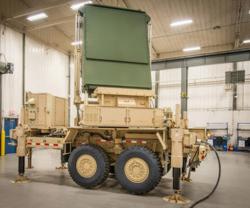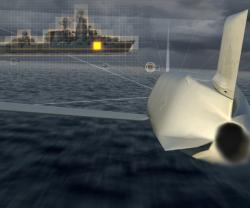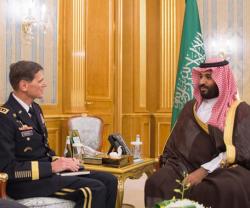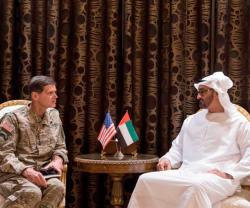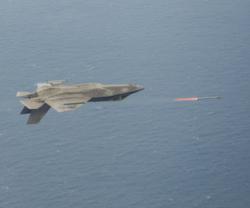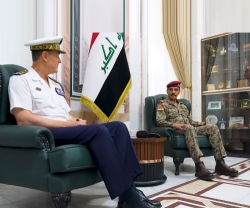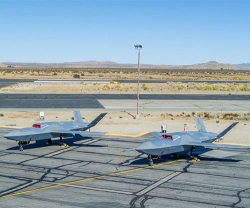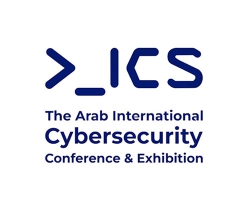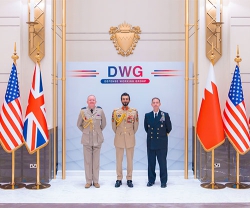Lockheed-USAF Sign 5-Year Tri-Mode Seeker Agreement
29.08.2011 North America
The U.S. Air Force Research Laboratory (AFRL) Munitions Directorate and Lockheed Martin signed a five-year cooperative research and development agreement (CRADA) to assess the viability of its cooled tri-mode seeker for integration onto Air Force weapon platforms.
"We will work closely with Lockheed Martin to leverage their mature seeker technology with some of our novel in-house targeting concepts. Our scientists are excited to begin incorporating these proven tri-mode seekers into data collects, algorithm developments and subsystem evaluations," said Buddy Goldsmith, Chief of the U.S. Air Force's Weapon Seeker Sciences Branch and Seeker Phenomenology Evaluation and Research (SPEAR) facility.
Lockheed Martin and AFRL will work together over the next five years to thoroughly assess tri-mode weapon capabilities, emerging targeting concepts and guidance techniques. Data and analysis from this effort will enable AFRL to develop a baseline for integrating seekers onto future U.S. Air Force weapon platforms intended to engage stationary and mobile targets in day, night and adverse weather conditions.
"We are pleased the U.S. Air Force is interested in further evaluating our tri-mode seeker and pushing it to its operational limits," said Frank St. John, Vice President of Tactical Missiles in Lockheed Martin's Missiles and Fire Control business. "We have continued developing and testing our seeker hardware and software for other customers and applications since the end of the Small Diameter Bomb II competition, and we look forward to demonstrating our mature seeker still offers superior effectiveness at the best value."
Lockheed Martin's cooled tri-mode seeker is based on three combat-proven weapon systems: Javelin, LONGBOW and HELLFIRE. The first-generation tri-mode seeker was developed in 2001 for the Common Missile program; later generations were developed for the Small Diameter Bomb II and other weapon systems. The seeker, now in its fourth generation, has undergone thousands of hours of laboratory, tower and captive-carry tests and has been proven in dirty battlefield testing and in guided flight.
The tri-mode seeker combines a semi-active laser sensor, an imaging infrared (I2R) sensor and millimeter wave radar into a single seeker with a common aperture. The cooled I2R sensor provides passive detection and lock-on-before-launch from substantial standoff ranges, significantly increasing warfighter survivability. All three sensor modes run simultaneously and share information in flight, allowing warfighters to defeat moving and stationary targets on land, at sea, in adverse weather and in an obscured/countermeasure environment, with true fire-and-forget capability.
Lockheed Martin's tri-mode seeker recently defeated a variety of countermeasures and obscurants in a series of challenging and realistic battlefield environments. Test results demonstrated all three sensor modes successfully communicated and worked collaboratively to effectively address and defeat each countermeasure and obscurant, targeting both moving and stationary targets.
"We will work closely with Lockheed Martin to leverage their mature seeker technology with some of our novel in-house targeting concepts. Our scientists are excited to begin incorporating these proven tri-mode seekers into data collects, algorithm developments and subsystem evaluations," said Buddy Goldsmith, Chief of the U.S. Air Force's Weapon Seeker Sciences Branch and Seeker Phenomenology Evaluation and Research (SPEAR) facility.
Lockheed Martin and AFRL will work together over the next five years to thoroughly assess tri-mode weapon capabilities, emerging targeting concepts and guidance techniques. Data and analysis from this effort will enable AFRL to develop a baseline for integrating seekers onto future U.S. Air Force weapon platforms intended to engage stationary and mobile targets in day, night and adverse weather conditions.
"We are pleased the U.S. Air Force is interested in further evaluating our tri-mode seeker and pushing it to its operational limits," said Frank St. John, Vice President of Tactical Missiles in Lockheed Martin's Missiles and Fire Control business. "We have continued developing and testing our seeker hardware and software for other customers and applications since the end of the Small Diameter Bomb II competition, and we look forward to demonstrating our mature seeker still offers superior effectiveness at the best value."
Lockheed Martin's cooled tri-mode seeker is based on three combat-proven weapon systems: Javelin, LONGBOW and HELLFIRE. The first-generation tri-mode seeker was developed in 2001 for the Common Missile program; later generations were developed for the Small Diameter Bomb II and other weapon systems. The seeker, now in its fourth generation, has undergone thousands of hours of laboratory, tower and captive-carry tests and has been proven in dirty battlefield testing and in guided flight.
The tri-mode seeker combines a semi-active laser sensor, an imaging infrared (I2R) sensor and millimeter wave radar into a single seeker with a common aperture. The cooled I2R sensor provides passive detection and lock-on-before-launch from substantial standoff ranges, significantly increasing warfighter survivability. All three sensor modes run simultaneously and share information in flight, allowing warfighters to defeat moving and stationary targets on land, at sea, in adverse weather and in an obscured/countermeasure environment, with true fire-and-forget capability.
Lockheed Martin's tri-mode seeker recently defeated a variety of countermeasures and obscurants in a series of challenging and realistic battlefield environments. Test results demonstrated all three sensor modes successfully communicated and worked collaboratively to effectively address and defeat each countermeasure and obscurant, targeting both moving and stationary targets.
Latest news
Latest events
Dubai International Air Chiefs’ Conference (DIACC 2025)
16 Nov 2025Atlantis, The Palm Dubai - United Arab EmiratesDubai Airshow
17 - 21 Nov 2025Dubai World Central (DWC) - United Arab EmiratesEgypt Defence Expo (EDEX)
01 - 04 Dec 2025Egypt International Exhibition Center New Cairo - EgyptDoha International Maritime Defence Exhibition & Conference (DIMDEX 2026)
19 - 22 Jan 2026Doha - Qatar


